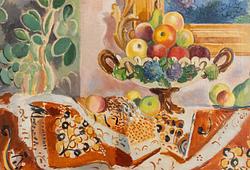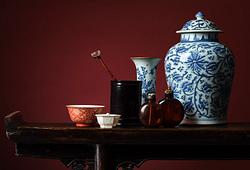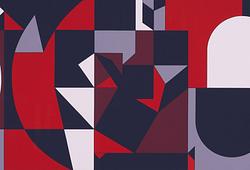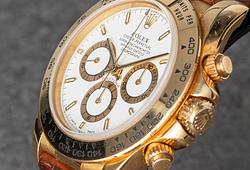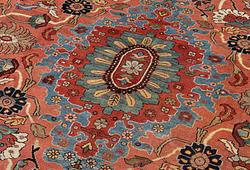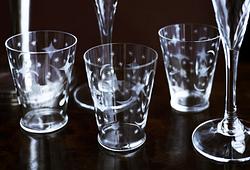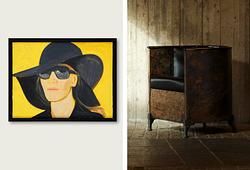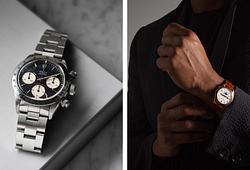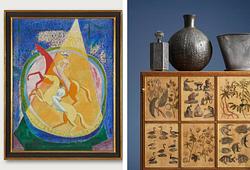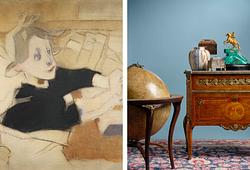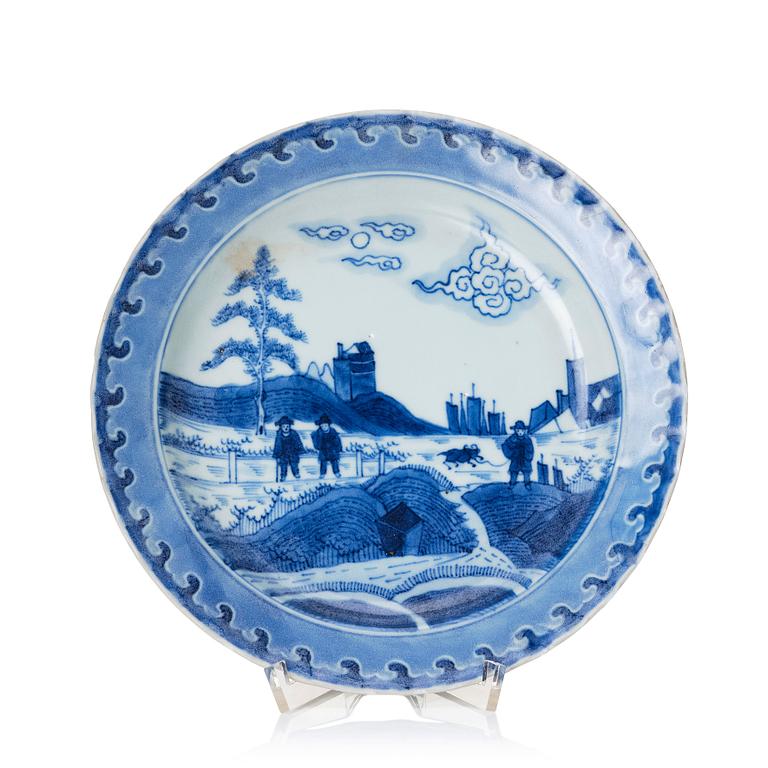A blue and white dish, Qing dynasty, Yongzheng (1723-35).
Painted decoration in underglaze blue with Dutch traders with a city in the background. Diameter 20.5 cm.
Surface wear. Chips.
Provenance
The Ca Mau shipwreck refers to a Chinese cargo sunken sometime between 1723 and 1735 off the coast of Vietnam’s farthest point in the South China Sea, discovered by Vietnamese fishermen in 1998. It is believed the wreck was a Chinese merchant’s junk on its way from Canton (Guangzhou) to Batavia when it caught fire and sank. The merchant had ordered the goods on board for Dutch traders, who had limited access to China and its ports.
The ship was treasure trove of mostly Yongzheng period ceramics has been important to date a lot of decoraitons. The sale was held at Sotheby’s in Amsterdam in 2007.
Literature
When sold these were listed as that the scene depicted was of Deshima Island in Japan, and these dishes came to be colloquially known as the "Deshima Island Pattern." Recently however, various academic circles have re-examined the origin of the scene depicted.
One school of thought in the recent academic scholarship on this issue, is that the scene depicted is of Dutchmen somewhere in Holland. Given that this scene bears close resemblance to a series of Delft dishes designed by Dutch pottery decorator F. Van Frytom (1632-1702), whose designs were also known to be copied on 17th and 18th century Japanese tea ceremony wares as well as Chinese export wares, the assumption that the scene must also be Dutch is certainly a defensible position.
Another school argues that the scene depicted is actually of Dutch traders in Gothenborg Sweden. The Dutch had established vast trading posts at Gothenborg in the late 17th / early 18th century, just as they had at Batavia (Jakarta) in Indonesia and Deshima Island in Japan. Close topographical analysis of Gothenborg itself as it actually appeared at the end of the 17th century, as evidenced by his close scrutiny of the 1709 Dahlberg prints titled Suecia Antiqua et Houdierna which depicted all the main edifices in Sweden at that time, strongly argues for the conclusion that the scene is one of Gothenborg. We find his analysis compelling. According to his argument and as these Dahlberg prints seem to bear out, the odd structure on the left / middle of the dish would be the Kvarnberget Wind Mill, and the gated towers in the middle correspond to the city's main entrance - The King's Gate."




